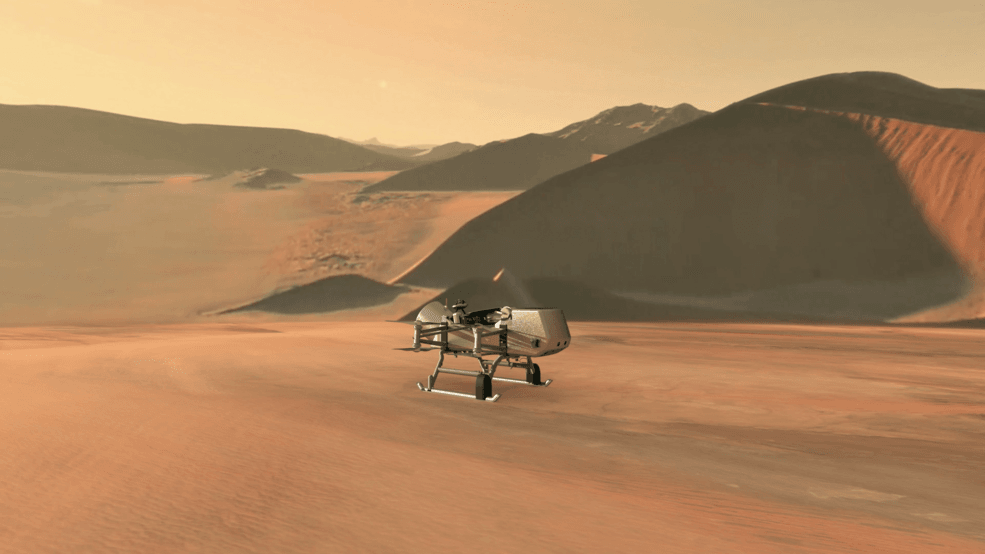After spotting methane lakes and simulating the environment on Saturn’s moon Titan, NASA wants to send a drone that will survey Titan looking for life. NASA’s drone is called Dragonfly, and it will fly across Saturn’s moon to examine sites and samples that could carry information about alien life.
NASA’s drone is scheduled to launch in 2026 and expected to arrive at Saturn’s icy moon in 2034. According to NASA’s announcement, Dragonfly will perform plenty of flybys and examine different locations on Titan which could support chemical processes that are also common on Earth.
Scientists say Titan is easily comparable to early conditions on Earth and could provide an idea of how life as we know it on Earth came into existence. During its mission, the spacecraft will explore various areas, from the moon’s organic dunes to the impact craters where water and other organic materials gather. The spacecraft will also explore the composition of Titan’s atmosphere, subsurface ocean and liquid reservoirs.
“With the Dragonfly mission, NASA will once again do what no one else can do,” NASA Administrator Jim Bridenstine said in a news release. “Visiting this mysterious ocean world could revolutionize what we know about life in the universe. This cutting-edge mission would have been unthinkable even just a few years ago, but we’re now ready for Dragonfly’s amazing flight.”
NASA will use 13 years’ worth of data from the Cassini mission to prepare Dragonfly to survey Titan. NASA plans to land it in the Shangri-La dune fields on the moon’s equator, which are also similar to the dunes in Namibia in southern Africa.
“Titan is unlike any other place in the solar system, and Dragonfly is like no other mission,” said Thomas Zurbuchen, NASA’s associate administrator for science at the agency’s headquarters in Washington. “It’s remarkable to think of this rotorcraft flying miles and miles across the organic sand dunes of Saturn’s largest moon, exploring the processes that shape this extraordinary environment. Dragonfly will visit a world filled with a wide variety of organic compounds, which are the building blocks of life and could teach us about the origin of life itself.”
Another similarity between Earth and Titan is the atmosphere, which is rich in nitrogen. However, what’s different is that Titan hosts methane clouds and rain. The weather is more complex, with surface processes combining complex organics, energy and water which could have brought life to Earth during its early history.
Titan is larger than Mercury, the planet that’s closest to the sun in our solar system. It’s also the second-largest moon in the solar system. It orbits Saturn and is located about 886 million miles from the sun, making it 10 times farther from the sun than Earth. Its temperatures reach -290 degrees Fahrenheit, which makes human life impossible. However, the presence of microbial life could shed light on the evolution of life on Earth.
“The New Frontiers program has transformed our understanding of the solar system, uncovering the inner structure and composition of Jupiter’s turbulent atmosphere, discovering the icy secrets of Pluto’s landscape, revealing mysterious objects in the Kuiper belt, and exploring a near-Earth asteroid for the building blocks of life,” said Lori Glaze, director of NASA’s Planetary Science Division.





